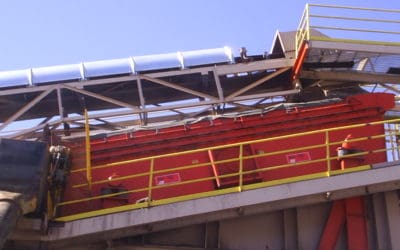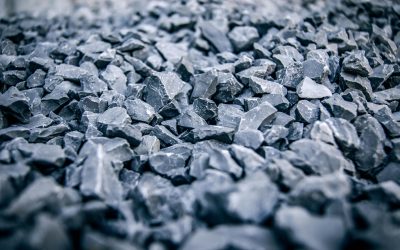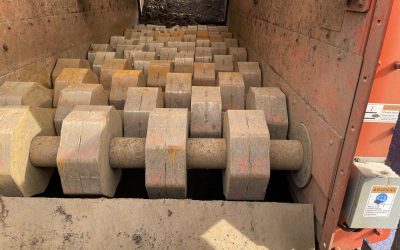Refuse-derived fuel (RDF) refers to energy produced from materials recycled from households, businesses, and large organizations worldwide. It plays a crucial role in waste management and sustainable energy production, supporting our world as we move toward more eco-friendly solutions. Additionally, RDF serves as a notable alternative to traditional fossil fuels.
To efficiently produce high-quality RDF, effective screening at the waste management level is essential. Opting for proper screening technology is key to meeting the end customer’s quality requirements.
How is Refuse Derived Fuel Created?
Refuse-derived fuel is produced through a multi-step process that involves removing non-combustible materials (such as metal, glass, and chemicals) and then refining the remaining combustible waste materials, like coal, wood, paper, and plastics. These materials are processed and combined to form a combustible fuel.
The fuel is then used as an energy source for all types of power generation. From cogeneration systems to incineration plants, kilns, gasification plants, and more – refuse-derived fuel is one of the most effective diverters of waste from landfills.
The RDF Process
- Waste is collected and sorted
- Usable materials are shredded and reduced in size
- Contaminants are removed using RDF screening technology
- Usable materials are dried and homogenized
- The final products are pelletized to improve ease of transport and storage
- All RDF final products are tested to ensure quality and energy efficiency
Learn more about MSW screening.
Choosing the Right Screening Technology for High-Quality RDF Production
To meet the highest standards for RDF quality, various screening technologies should be employed. Each screening type offers advantages and limitations:
Trommel Screens
These screens use a set of rotating drums with spinning screens designed to separate materials based on size. They are effective at sorting through fine materials (like natural aggregates) but can be less efficient for flat or sticky materials, since the drums are prone to binding and clogging.
Disc Screens
Disc screens utilize large, rotating discs to separate refuse-derived fuel materials based on shape and size. This type of screening equipment is effective at handling fibrous materials, like wood, paper, small plastics, and cardboard. However, just like the trommel screen, they can be prone to clogging when filtering through fine or sticky materials.
Vibratory Screens
Often the screen of choice for RDF materials processing, these screens use high-acceleration forces to separate materials by size but may be less effective for sticky or irregularly shaped materials. It is important to opt for a high-efficiency vibratory screen that is rated to sort the most difficult materials, like the BIVITEC®.
Common Challenges Faced in RDF Waste Processing
One of the main issues is the inconsistent composition of waste streams, as municipal solid waste (MSW) contains a mix of organic, inorganic, and recyclable materials. This variability makes it difficult to produce RDF with a consistent energy output. Additionally, contamination from non-combustible materials (like metals and glass) further complicates the process, potentially damaging equipment and reducing fuel quality. High moisture content is another concern, as it lowers the calorific value of RDF and increases processing costs.
Beyond the technical challenges, the high costs associated with sorting and processing waste, along with strict environmental regulations, make it expensive to produce RDF on a large scale.
How the BIVITEC® Screen Improves RDF Processing
The BIVITEC® vibratory screen by Aggregates Equipment Inc. (AEI) has several advantages and solutions for solving the typical headaches caused by standard vibratory screens. Here’s how it optimizes RDF processing:
- Dual screening handles difficult materials
- A dual vibratory system (up to 50g’s) keeps screens clear
- Increased processing capacity
- Produces uniform and high-quality RDF product
- Reliable operation
- Customizable sizes and deck configurations
- Available in mobile or static options
The BIVITEC® screening technology prevents the clogging and binding of materials and reduces operation downtime. Its customizable design enables a cost-effective solution for facilities focused on screening difficult materials quickly, ultimately supporting lower energy costs and increasing productivity.
To learn more about how vibratory screens can optimize your refuse-derived fuel processing operations, contact the experts at AEI today.


